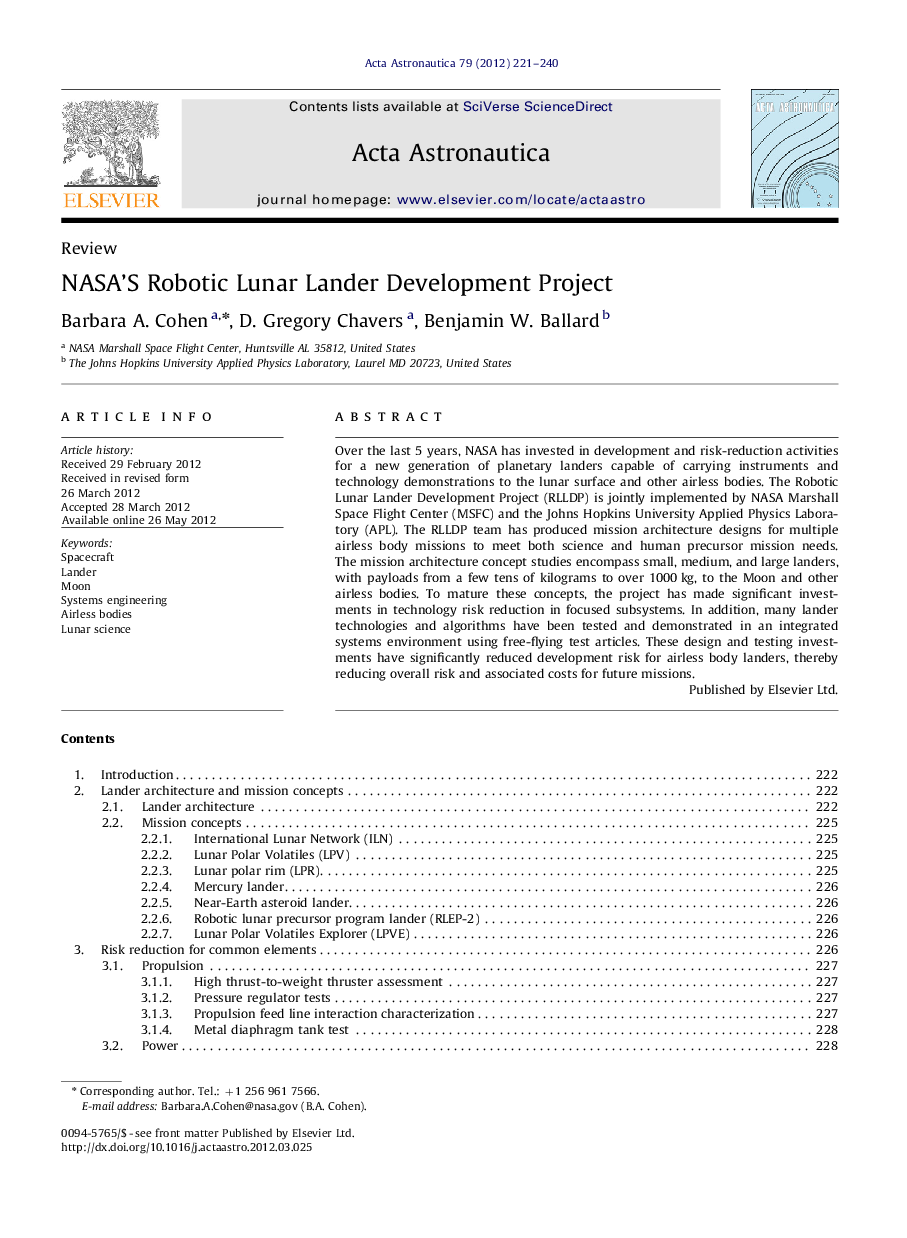| Article ID | Journal | Published Year | Pages | File Type |
|---|---|---|---|---|
| 1715313 | Acta Astronautica | 2012 | 20 Pages |
Over the last 5 years, NASA has invested in development and risk-reduction activities for a new generation of planetary landers capable of carrying instruments and technology demonstrations to the lunar surface and other airless bodies. The Robotic Lunar Lander Development Project (RLLDP) is jointly implemented by NASA Marshall Space Flight Center (MSFC) and the Johns Hopkins University Applied Physics Laboratory (APL). The RLLDP team has produced mission architecture designs for multiple airless body missions to meet both science and human precursor mission needs. The mission architecture concept studies encompass small, medium, and large landers, with payloads from a few tens of kilograms to over 1000 kg, to the Moon and other airless bodies. To mature these concepts, the project has made significant investments in technology risk reduction in focused subsystems. In addition, many lander technologies and algorithms have been tested and demonstrated in an integrated systems environment using free-flying test articles. These design and testing investments have significantly reduced development risk for airless body landers, thereby reducing overall risk and associated costs for future missions.
► NASA is developing small robotic landers for the Moon and airless bodies. ► We created mission concepts to meet both science and human precursor needs. ► We addressed subsystem-level technological risks with new research activities. ► We built free-flying test articles to create an integrated systems environment. ► These development investments will reduce mission cost and risk.
